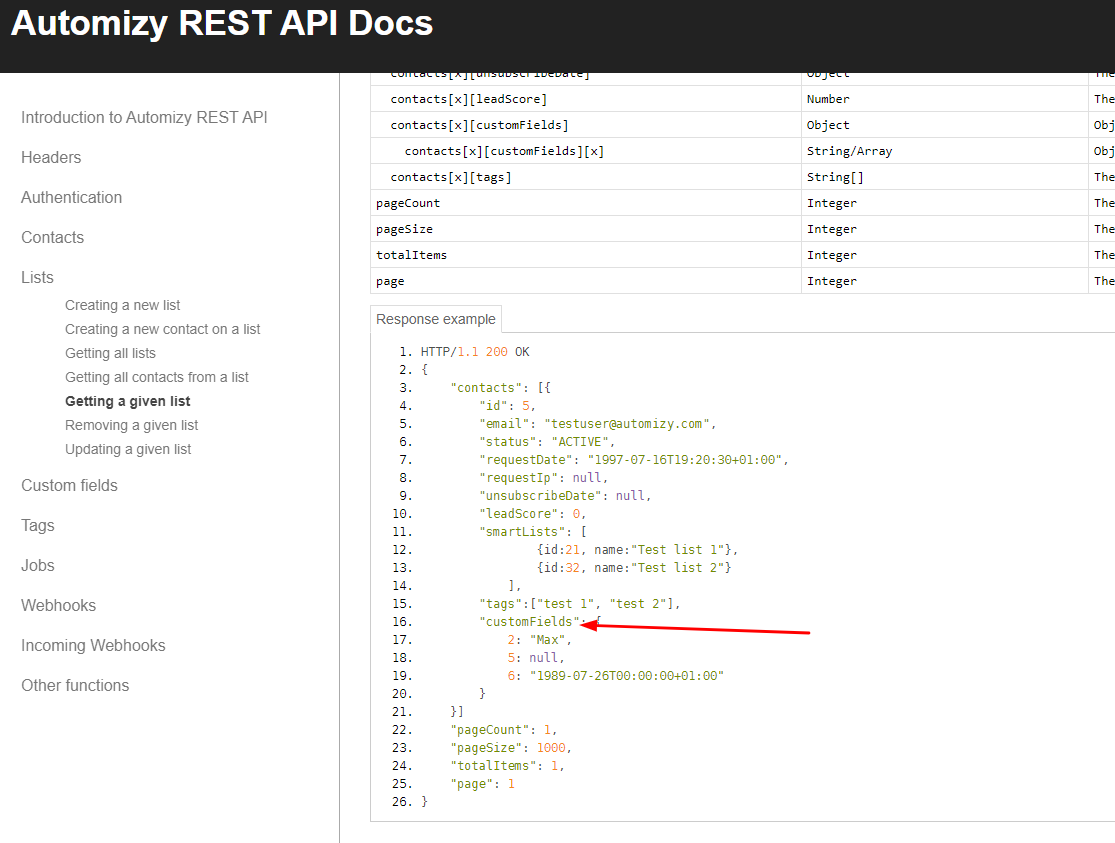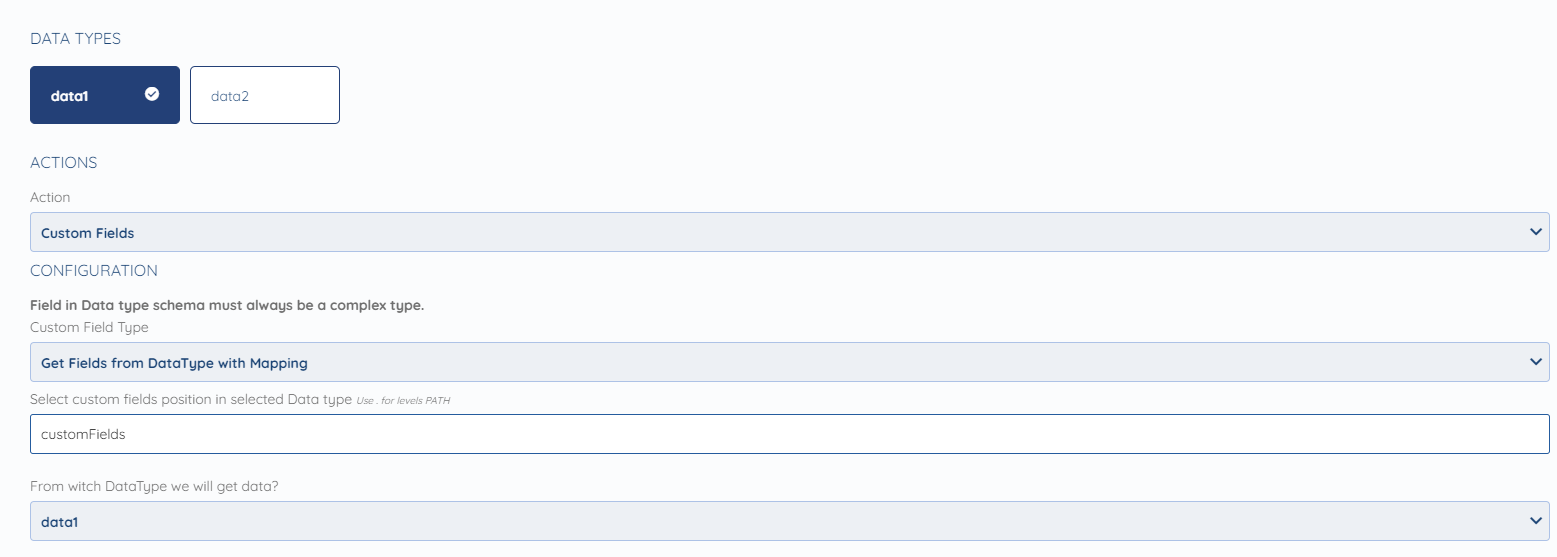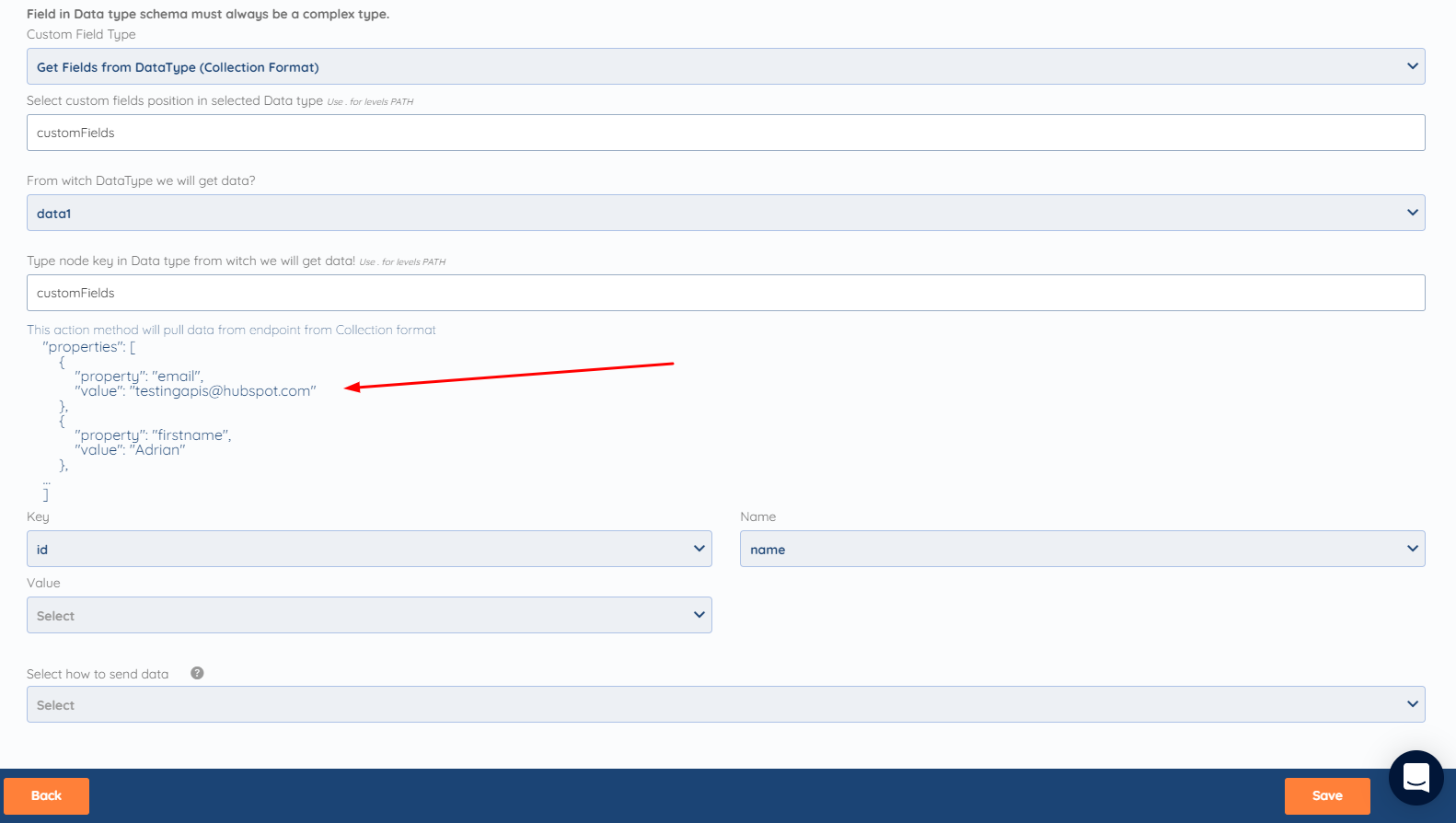Due to its nature, the Workflow feature may create infinite loops in SyncSpider core. That could put our system under high pressure. For that reason, the Workflow feature is only granted to verified developers.
If you are looking to get the Workflow feature, you can reach out to our support chat after you have already built 5 working integrations (which don't require the Workflow feature). These integrations should be built into your account and should be made public after our developers have tested them.
For this action we are separated in the following 4 Type's that cover all possible cases in which you might find this data type.
Custom Field Type's (options):
Get Fields from DataType
This is the most basic Type of retrieving Custom Field data and is the most used.
It allows us to make the API call in the background beforehand and dynamically assemble the list of all unique Custom Fields across all the Contacts so that the schema can be generated for the mapping of all unique fields. Otherwise there would be no way of mapping the different versions of Custom Fields at once.
Here you select the custom fields position or in other words the exact name of the complex field that you wish to get data for (Use the . character for levels PATH).

In this example with Automizy the name of the complex field is "customFields" and will denote the exact section of the JSON code that should be collected from the Data Type(Within your Integration) that you are extracting Custom Fields from.

Next, select the Data Type(That you created within your Integration) where the JSON code should be collected from.

In this example it is the same Data Type as the one we are doing the modification on.
And lastly type in the node key of the source Data type from witch we will get data.
This defines the same root for the source of the Custom Fields as the selected custom fields position does for the Data Type we are modifying. (In this case they are the same as we are modifying this data type using its own source data)
Get Fields from DataType with Mapping
This feature allows us to use, if available, an advance format of Custom Fields which we can dynamically transform further so that it loses the key - value format and the value becomes displayed as the key as well in the mapping section of tasks.
This way the user can populate the mapping more easily.
Here you select the custom fields position or in other words the exact name of the complex field that you wish to get data for (Use the . character for levels PATH).

In this example with Automizy the name of the complex field is "customFields" and will denote the exact section of the JSON code that should be collected from the Data Type(Within your Integration) that you are extracting Custom Fields from.
Having chosen from which DataType we will get data you are prompted to define the field that will carry the id by which the custom field is assigned to the contact as well as the field that will populate the Name which is visible during task mapping.

Lastly in the Mapping type Field you select the attribute of the Custom Field that carries the "type" and type in the exact value specified in that Integration's documentation.
More on Collection Field Format here.
Get Fields from DataType(Complex Format)
This option is the same as the first, basic, option with the additional option to handle more complex source fields that require more detailed sorting using our Complex Format.
Presented below you see the expected data format that needs to be located in your Data Type source (data1 in this example).

Get Fields from (Collection Format)
This option is the same as the first, basic, option with the additional option to handle more complex source fields that require more detailed sorting, using our Collection format.
Presented below you see the expected data format that needs to be located in your Data Type source (data1 in this example).

Next set up the Collection Field as you would in mapping a CSV and
Lastly Select how to send data. Whether you want it sent as Complex or Collection field.

More on Collection Field Format here.
Was this article helpful?
That’s Great!
Thank you for your feedback
Sorry! We couldn't be helpful
Thank you for your feedback
Feedback sent
We appreciate your effort and will try to fix the article